Zucchini compatibility with other vegetables in the garden

Despite the fact that zucchini is a rather unpretentious plant, before planting it, you must familiarize yourself with certain recommendations that will avoid most problems in the future. Many mistakes are due to the fact that the owners of vegetable gardens do not know what can be planted near a given crop, and what it is better to refuse.
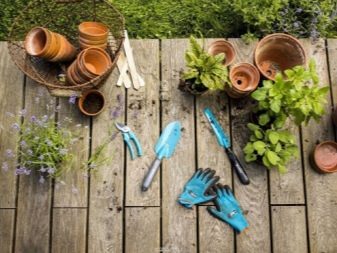

Pumpkin compatibility
Pumpkin is a popular crop that is planted outdoors quite close to the squash. However, in practice, one may encounter certain problems that are distinctive for a given plant. The first thing that experts recommend paying attention to is the too active growth of the pumpkin root system, individual branches of which can reach 5-7 m in length. Growing this crop in the garden can have a detrimental effect on the further growth of zucchini, including a high chance of fruit deformation and low yields.
The only correct solution would be to place the pumpkin in the greenhouse. In specialized conditions, the plant is not able to harm the zucchini, since the cultivated varieties do not differ in such a developed rhizome as in the wild pumpkin. If it is not possible to grow these crops in greenhouse conditions, and the size of the garden does not allow them to be placed separately, other plants must be planted between the squash and pumpkin, which serve as a partition. Corn, sunflower and legumes are well suited for this.
Instead of growing additional plants on the site, you can build an impromptu partition from a wooden or metal shield, polyethylene material, or ordinary rag cloth. Experts recommend digging small plastic trays between the two crops, due to which the pumpkin roots will not grow much. In addition to the tips described above, many agronomists recommend sticking to a certain plant between pumpkin and zucchini - at least 3-3.5 m, as well as systematically directing the lashes of plants in other directions.
Such a rule will avoid cross-pollination and reduce the likelihood of crop spoilage.
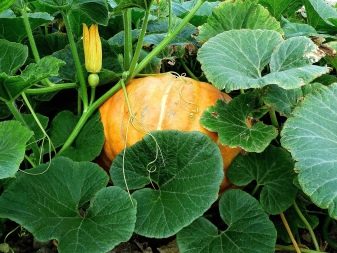

Neighborhood with cucumbers
Due to the fact that cucumbers love fertile land, need regular watering and are especially demanding for a variety and intensive feeding, this crop can be planted next to zucchini. However, before sowing vegetables as neighbors, there are certain guidelines and requirements to be read. In addition to the fact that both plants are compatible with each other, their seed material goes through the same preparation stages, which are introduced immediately before sowing. Seeds of cucumbers and zucchini are preliminarily kept in a pre-prepared liquid with a large number of drugs that stimulate growth.
In the future, zucchini and cucumbers are grown as seedlings. If desired, seed material can be sown directly into open soil, which should be pre-treated with specialized agrotechnical means. The vegetative process in zucchini and cucumbers occurs simultaneously. Before planting cucumbers, you should be aware that this vegetable loves warm enough, because its placement in the garden usually begins at a time when the soil material warms up to 14-16 ° C.
Cucumber and squash plants also need to be additionally protected with shelter at temperatures below 0 ° C. It is recommended to use plastic wrap for this.
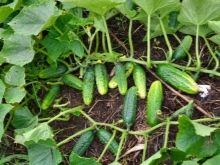


Despite the fact that cucumbers and zucchini are completely compatible vegetable crops, experts still advise keeping a small distance between them. This is indicated by the following reasons.
- Cross-pollination. Cross-pollination in two similar plants often results in hybrid vegetables. At the same time, unique taste and visual properties usually appear after one generation. In order to avoid this process, it is recommended to additionally cover the zucchini and cucumbers.
- Developed root system. Cucumbers generally have a fairly developed and active rhizome, which is capable of oppressing any other crops. When planting this vegetable next to the vegetable marrow, you must additionally separate it with other plants.
- Features of the tie. Due to an overabundance of pollen, which is often caused by late ripening of cucumbers, the visual and taste qualities of zucchini can deteriorate, while a significant decrease in yield is observed. To avoid this, experts advise planting early varieties.
In the context of a lack of additional space on the site, many gardeners recommend separating zucchini plantations from cucumber beds using beans. Carefully and carefully planting beans between related plants avoids mixing pollen and reduces the likelihood of unwanted problems in the future. In addition to beans, corn or sunflowers can be used to limit the area. Such a composition will look quite beautiful in the garden, and will also simplify the process of finding the right culture.
It should be noted that cucumbers and zucchini work much better in greenhouse conditions than when grown in open potting soil. It is recommended to plant hybrid varieties of parthenocarpic zucchini in greenhouses, the distinctive advantage of which is the possibility of self-pollination. Despite the prevailing opinion in society, each vegetable crop is watered separately. To make it easier to monitor the moisturizing process, experts recommend dividing plantings into specific areas or zones. Although cucumber bushes are not afraid of moisture on the surface of the leaves, squash can suffer from a large amount of liquid.

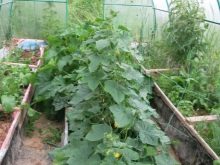

Planting with other vegetables
In addition to compatibility with cucumber and pumpkin, you should also know about the rules for growing zucchini next to other vegetables and crops. Otherwise, the risk of a decrease in the quality of yields, fruits and many other problems that can lead to the complete wilting of the plant increases.
We list the features of growing zucchini with the most popular crops.
- Melon. Zucchini and melons are usually not grown side by side. Otherwise, cross-pollination is observed, due to which the taste and visual characteristics of the fruits often deteriorate.
- Patissons. Both zucchini and squash are not recommended to be planted too close to zucchini, otherwise the owner of the garden will face the problem of cross-pollination of plants.
- A tomato. It is better to plant tall tomatoes next to zucchini. Tomatoes of a stunted variety are able to be suppressed near the large and bulky foliage of another plant, which negatively affects their further growth.
- Beans. Many experts even recommend planting this plant near zucchini. Beans and peas are also often used as hedges between two crops that do not fit together.
- Potato. Planting zucchini close to potatoes is not a good idea.This opinion is explained by the fact that these roots often extract any nutrients and compounds from nearby crops, which negatively affects their taste and visual characteristics.
- Eggplant. Due to the high similarity in the structure of the root system and too rapid growth, it is recommended to plant eggplants at a distance of at least 0.5-1 m from the zucchini. It is better to place such a plant on the sunny side of the site.
- Beet. This vegetable requires abundant watering and frequent fertilization, which has a beneficial effect on the health and quality of growth of zucchini. Many gardeners planted a similar crop nearby in order to simplify the feeding process.
- Onion. Garlic, onion and dill are good for the zucchini and do not harm them in any way. These crops contain a large amount of organic phytoncides, which have a beneficial effect on the vegetable and greatly reduce the risk of powdery mildew formation.
- Cabbage. Zucchini and cabbage in the garden are compatible vegetables. However, before growing these crops close to each other, you should familiarize yourself with the specific growth rules. Experts strongly recommend placing these vegetables at a distance of at least 1 m from each other.
Zucchini can be planted without problems near plants such as corn, strawberries, various varieties of flowers, radishes and peppers. At the same time, this culture is not recommended to be placed close to watermelons and squash.

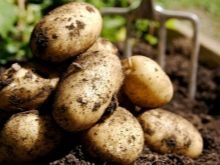
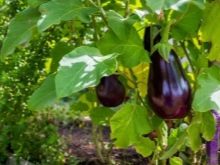








The comment was sent successfully.